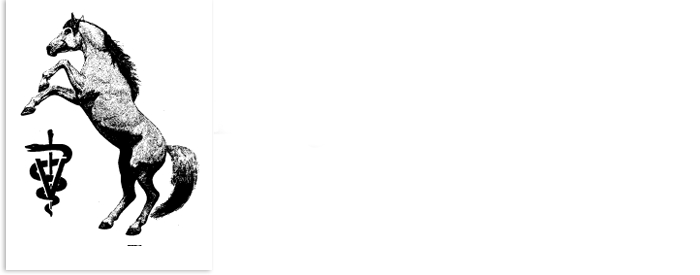Stifle Lameness - Upward Fixation of the Patella
Stifle lameness generally falls into one of two diagnostic choices the first is that of permanent or intermittent upward fixation of the patella. This is described below.
The stifle joint in horses is like our knee. Two bones meet, the femur and the tibia with the patella overlying the joint. There are several tendons and ligaments involved.
If you feel your knee, running from your knee cap down is a single patellar ligament. Horses have three not one. One runs to the inside. One runs to down the middle and one runs the outside of the leg.
Horses can develop a condition known as upward fixation of the patella. This shows up as an intermittent locking of the joint. In the most serious cases the joint is completely locked such that the leg is extended backward and the horse can only drag his leg forward without being able to flex the stifle joint. More often the locking occurs only briefly during locomotion resulting in a jerking to the gait when the stifle joint goes from extension to flexion during motion.
What is happening is that the ligament running along the inside of the leg gets caught or completely locked as it slides over a ridge on the end of the femur, the thigh bone. This is what causes the leg to lock or jerk as the horse goes from extension to flexion. The diagnosis is most often made in large horses and small ponies.
Treatments vary which indicates that no one treatment works in all horses. Non-surgical treatment has been very successful in my hands. This includes physical therapy and medication. The physical therapy requires trotting the affected horse up and down hills 30 minutes 3 times per week. The medical therapy involves injecting an estrogen compound two times per week for a period of 6 to 8 weeks. In addition, doing a so called "internal blister" of the stifle is helpful. The point of these therapies is to tighten the stifle ligaments and quadriceps muscles to the point where the medial patellar ligament is no longer catching on the ridge of the femur.
If non-surgical treatment does not work surgery is considered. The surgery involves cutting the medial patellar ligament which is catching on the inside of the leg. This surgery will help many horses. Unfortunately, it can cause permanent lameness in a few. I have however been amazed. Called out for a second opinion on a horse following a stifle surgery, I saw a terribly lame horse who could not walk without limping badly. Telling the owner I gave the horse little chance to recover, I suggest leaving the horse in his paddock for 4 more months before rendering final judgment. This same horse is now jumping fences and competing successfully. It has not been lame since being put back to work. In this case surgery proved to be the magic bullet.

